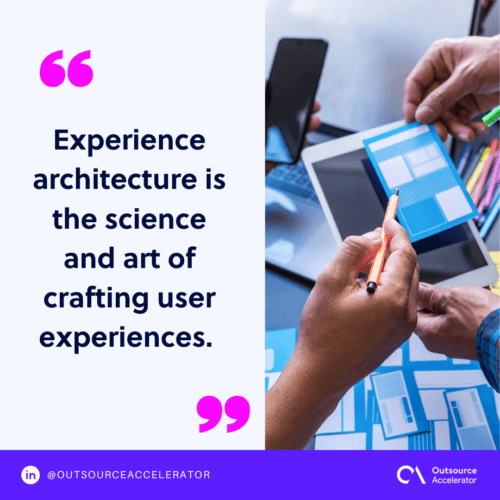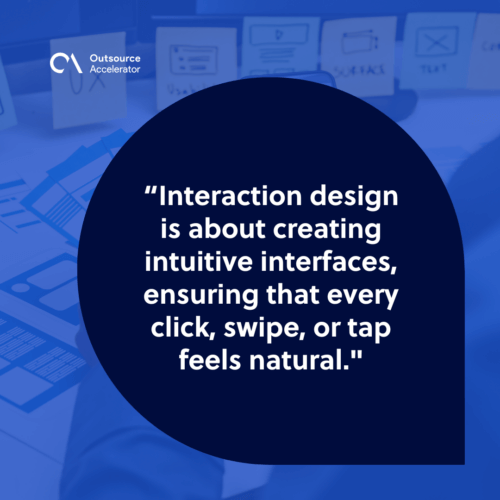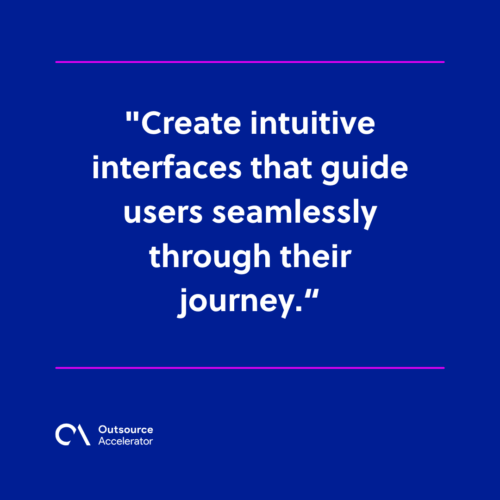The art of experience architecture

Imagine walking into a library where books are scattered randomly, without clear organization, helpful staff, or confusing signs.
How would you feel? Frustrated, right?
That’s where experience architecture comes into play, turning chaos into order, confusion into clarity, and frustration into delight.
This article will explore this concept, its key elements, and why it’s important for businesses. Plus, outlined here are the five practical steps to create a winning online user experience.
What is experience architecture?
Experience architecture is the science and art of crafting user experiences.
Think of it as the blueprint of a shopping mall that guides you seamlessly from the entrance to your favorite store, leaving you with a sense of satisfaction and ease.
In essence, it’s the science of understanding how people interact with your brand and making every interaction enjoyable.

Elements of experience architecture
Here are some key elements of experience architecture:
User research
Before crafting any memorable experiences, you must first understand your users. This is where user research comes in. Through surveys, interviews, and observations, you gain insights into their needs, preferences, and pain points.
User personas
Picture designing a party without knowing who your guests are. User personas are fictional characters that represent your various customer segments.
They help you create experiences tailored to different user groups, ensuring everyone feels welcomed and valued.
Journey mapping
Journey mapping is like charting a treasure map. It involves visualizing the entire user experience from start to finish, highlighting touchpoints and emotional highs and lows.
This helps you identify areas where you can make the journey smoother and more delightful.
Information architecture
Think of information architecture can be compared to the foundation of a building. It’s the structural design that organizes information, making it easily accessible.
When your users can find what they need effortlessly, they are more likely to stay engaged.
Interaction design
Interaction design is the way you choreograph the dance between users and your product or service.
It’s about creating intuitive interfaces, ensuring every click, swipe, or tap feels natural. It is like designing a car’s dashboard where all the controls are within easy reach.

Why businesses need experience in architecture
Businesses need experience architecture for several critical reasons.
Competitive advantage
In a crowded marketplace, providing a superior user experience is your secret weapon.
When customers have a smooth, enjoyable interaction with your brand, they’re more likely to choose you over competitors.
Customer satisfaction
Happy customers are loyal customers. When you consistently meet or exceed their expectations, they’re more likely to return.
Brand reputation
Your brand’s reputation is shaped by every interaction a customer has with you. A well-designed experience not only keeps customers coming back but also brings positive word-of-mouth.
User retention
Gaining new customers holds significance, yet it is even more vital to maintain the ones you already have. Experience architecture helps in building relationships and keeping users engaged.
Efficiency and productivity
A well-structured experience saves time and reduces friction for both customers and employees. It streamlines processes and boosts efficiency, making everyone’s life easier.
5 steps to creating experience architecture
Now that we understand the importance of experience architecture, let’s explore how to create one.
It involves a series of well-defined steps, namely:
1. User research and analysis
The first step in creating a successful experience architecture is understanding your audience.
Here’s how you can do it:
- Start by identifying your target audience. Who are your users? What are their characteristics, needs, and behaviors?
- Gather data through various methods, including surveys, interviews, and analytics.
- Use the collected data to identify patterns, pain points, and opportunities for improvement.
2. User personas and journey mapping
Once you have a clear picture of your audience, it’s time to create user personas and map their journey. This step is like planning the party menu and organizing the activities:
- Generate user profiles. Construct in-depth user profiles using the information you’ve gathered through your research.
- Map user journeys. Visualize the user’s experience from start to finish. This includes identifying key touchpoints and understanding the user’s emotions go through at each stage.
3. Information architecture and interaction design
The next step involves structuring information and designing interactions. This is like setting up the party venue and ensuring everything runs smoothly:
- Organize information. Structure content and information logically. Ensure that users can easily access and navigate through your product or service.
- Design interaction. Create intuitive interfaces that guide users seamlessly through their journey. This is similar to designing the flow of activities and how guests can interact with the party space.

4. Visual design and prototyping
Now, it’s time to visualize your design and create prototypes. Translate your ideas into visual prototypes that give a clear picture of the end product.
5. Testing and iteration
The final step is all about testing and making improvements based on feedback.
Implement user testing to validate your design. Just as you’d have a rehearsal to check if everything runs smoothly, user testing helps you identify any issues and gather feedback.
Continuously refine your design based on user feedback. Make changes and improvements to keep the experience dynamic and responsive to changing needs.
The evolution of experience architecture
Experience architecture is not static. It evolves with technology, culture, and user expectations.
What was once a great experience may become outdated. This evolution is a constant journey of adaptation, innovation, and improvement.
Staying attuned to these changes is vital for businesses to remain competitive and provide cutting-edge experiences.







 Independent
Independent




